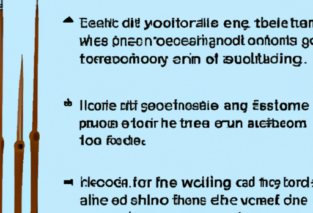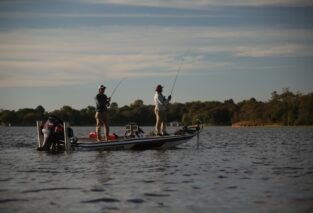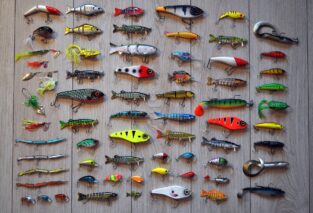If you’ve ever found yourself staring at a body of water, unsure of whether it’s the right place to cast your line, then “Reading The Waters: How To Understand Fishing Conditions” is the product for you. Packed with essential information and practical tips, this guide will equip you with the knowledge needed to decipher the subtleties of fishing conditions. From understanding water clarity and temperature to recognizing the impact of wind and tides, you’ll have all the tools necessary to maximize your fishing success. So, whether you’re a seasoned angler or a beginner just dipping your toes into the world of fishing, “Reading The Waters” will be your trusted companion on every fishing adventure.
Water Clarity
Water clarity refers to how clear or murky the water is, which can greatly affect fishing conditions. Understanding turbidity levels can help you gauge the visibility of the water, which, in turn, can impact the behavior of fish. Turbidity levels vary based on factors such as sediment, algae, and other particles suspended in the water.
Understanding Turbidity Levels
Turbidity levels are typically measured using a scale known as a turbidity meter or by visual observation. Clear water has low turbidity, allowing fish to see clearly and making it easier for them to locate food sources. On the other hand, highly turbid water can reduce visibility, making it more difficult for fish to find prey and for anglers to present their bait effectively.
Understanding the different turbidity levels can give you valuable insight into what to expect when it comes to fishing conditions. Pay attention to any changes in water clarity as you fish, and make adjustments accordingly.
Significance of Water Clarity for Fishing
Water clarity plays a crucial role in fishing success. Clear water can make fish more wary and cautious, making it necessary to use finesse techniques and light line to avoid spooking them. In clear water, it’s essential to choose lures that mimic natural prey accurately.
On the other hand, fishing in murky or stained water can provide advantages. The reduced visibility can offer cover for anglers, allowing them to use heavier lures and darker colors to attract fish. In these conditions, fish rely more on vibrations and scent to locate their prey, making techniques such as slow-rolling spinnerbaits or using scented soft plastics effective.
Being able to assess water clarity and adjust your fishing strategy accordingly can make a significant difference in your success on the water.
Water Temperature
Water temperature is another critical factor that influences fish behavior. Different species of fish have specific temperature preferences, and understanding how it affects their activity can help you target them more effectively.
Impact of Water Temperature on Fish Behavior
Water temperature directly affects a fish’s metabolism, which in turn influences its behavior and feeding patterns. Fish are ectothermic, meaning their internal body temperature matches that of the surrounding water. As the water temperature changes, so does their activity level.
In cooler water, fish tend to be less active and may seek out deeper, warmer areas. They may also become less aggressive and require a slower presentation to entice a strike. Conversely, in warmer water, fish become more active and tend to feed more aggressively.
Understanding the preferred temperature range of the fish species you are targeting can help you narrow down your fishing locations and select appropriate baits and techniques.
Measuring Water Temperature
Measuring water temperature is essential for gaining valuable insights into fish behavior. There are various tools available to anglers to measure water temperature, including handheld digital thermometers and fish finders with built-in temperature sensors.
When measuring water temperature, it’s crucial to take readings at different depths, as temperature variations can occur within the water column. Fish may be located at different depths depending on the temperature gradients, so understanding these variations can give you an advantage when selecting your fishing spot.
By monitoring water temperature and recognizing its impact, you can adapt your fishing techniques and improve your chances of landing more fish.
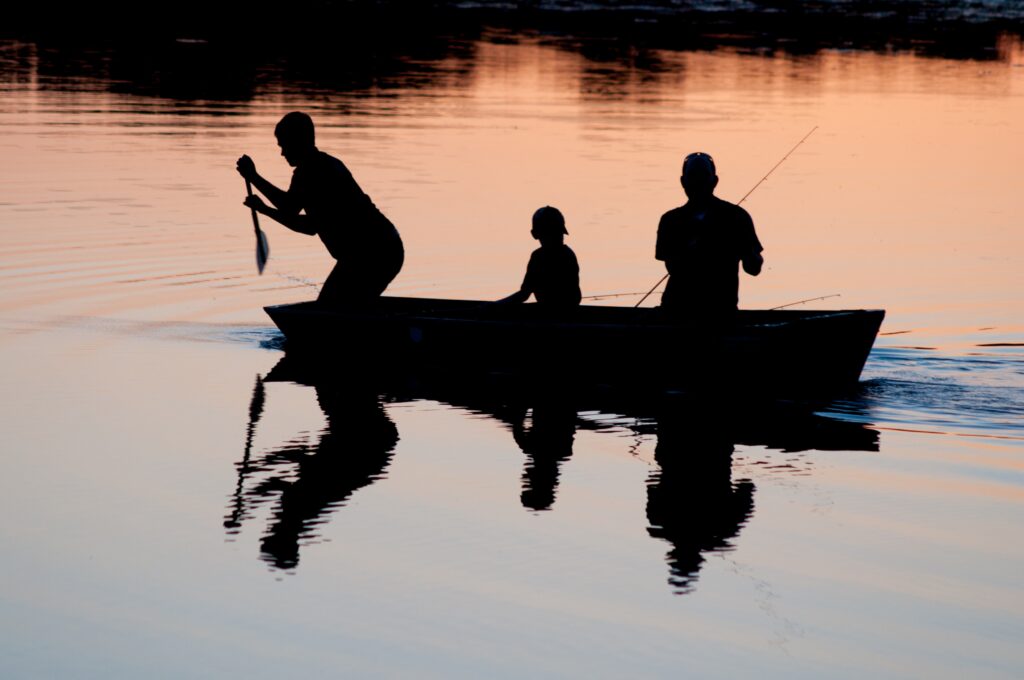
Currents
Understanding how currents affect fish location is key to finding fishing hotspots. Currents can impact water movement, food availability, and fish behavior, making them a significant factor to consider when planning your fishing trips.
Effect of Currents on Fish Location
Fish are highly influenced by water currents, as they provide them with a constant flow of oxygen, food, and other vital resources. Understanding how fish relate to different types of currents can help you identify their preferred locations.
Fish often gather near structures that break the flow of the current, providing them with an opportunity to conserve energy while remaining in the area of increased food availability. Look for areas with eddies, submerged rocks, or vegetation where fish may seek shelter from the current.
In rivers, fish will often hold in areas where the current is slower, such as behind boulders or along current seams. These locations provide fish with a resting spot while still allowing them to intercept food being carried by the current.
Identifying Fishing Opportunities with Currents
Currents create excellent fishing opportunities, as they concentrate fish and their prey in specific areas. By understanding the relationship between fish and currents, you can target these areas to increase your chances of success.
When fishing in rivers or streams, casting your bait or lure upstream and allowing it to drift naturally with the current can be an effective technique. This technique mimics the natural movement of prey and can trigger a strike from fish waiting for an easy meal. In lakes or reservoirs with strong currents, finding areas where the current is directed towards shallow structures can also be productive.
By recognizing the impact of currents on fish behavior and utilizing them to your advantage, you can significantly improve your fishing experience.
Tides
The connection between tides and fishing is undeniable. Tides influence water movement, expose or cover various structures, and affect fish behavior and feeding patterns. Understanding this relationship can give you an edge when it comes to planning your fishing trips.
Understanding the Connection between Tides and Fishing
Tides are the rise and fall of sea levels caused by the gravitational forces of the moon and the sun. They occur twice daily and can have a profound impact on fishing conditions. Understanding how tides influence water movement and fish location is crucial for successful angling.
During incoming tides, water moves towards shore, bringing in food sources and attracting fish. This is an excellent time to fish shallower areas or near structures that become accessible as the water rises. On the other hand, during outgoing tides, water moves away from shore, concentrating fish in deeper areas or certain structures that remain submerged.
Best Fishing Tactics for Different Tidal Conditions
Different tidal conditions require different fishing tactics. During high tide, fish often move closer to shore, providing opportunities for shore anglers. Casting near structures such as jetties, piers, or rocks can yield good results during high tide, as fish use these areas as ambush points.
During low tide, fish may be more concentrated in deeper areas or channels. Fishing these areas with deep-diving crankbaits, jigs, or live bait can be effective during this time. Additionally, targeting structure that remains submerged even at low tide, such as submerged reefs or drop-offs, can be productive.
By studying tide charts and understanding how tides influence fish behavior, you can plan your fishing trips accordingly and increase your chances of success.

Weather Patterns
Weather patterns have a significant impact on fishing conditions, as they can dictate fish behavior, feeding patterns, and even angler safety. Assessing the influence of weather on fishing is crucial for maximizing your chances of having a productive day on the water.
Assessing the Influence of Weather on Fishing
Weather conditions such as temperature, sunlight, wind, and atmospheric pressure can all affect fish behavior. Understanding these factors can give you valuable insights into when and where fish are likely to be active.
Temperature plays a crucial role in fish activity, with many species becoming more active in warmer conditions. Sunny days can cause fish to seek shade or cover, making areas with shade, vegetation, or structure attractive fishing spots. Wind can stir up the water, stimulating fish activity, but excessive wind can make fishing challenging or unsafe.
Monitoring weather forecasts and being aware of any changes in conditions while you are on the water can help you adjust your fishing strategy accordingly. While some weather patterns may make fishing more challenging, they can also present unique opportunities for experienced anglers.
Adjusting Strategies based on Weather Forecasts
The weather forecast can help you prepare for your fishing trip by providing insight into the expected conditions. If the forecast predicts hot and sunny weather, consider targeting shaded areas or fishing during early morning or evening when temperatures are lower and fish are more active.
In contrast, if the forecast calls for overcast or rainy weather, fish may become more active and less wary, providing an opportunity for excellent fishing. During these conditions, topwater lures or baits that create disturbance on the water’s surface can be highly effective.
Conversely, if the forecast indicates high winds or severe weather, it may be wise to postpone your fishing trip for safety reasons. Always prioritize your safety and stay updated on the latest weather conditions to ensure an enjoyable and secure fishing experience.
Wind
Wind is another factor that can significantly influence fish behavior and feeding patterns. Understanding the impact of wind on fish can help you adjust your fishing techniques and improve your chances of success.
Impact of Wind on Fish Feeding Behavior
Wind can create a ripple effect on the water’s surface, causing a chain reaction that can stimulate fish activity. The surface disturbance can disorient or expose prey, making them easier targets for fish. Additionally, wind can carry scents and vibrations, attracting fish to potential feeding opportunities.
When fishing in windy conditions, it’s essential to adjust your fishing techniques accordingly. Fish may become more aggressive and more willing to strike at fast-moving baits or lures that create vibrations. Techniques such as topwater fishing or using jerkbaits can be effective in windy conditions.
Using Wind Direction for Better Casting
Wind direction can also affect the success of your casts. By casting into the wind, your bait or lure will be carried further, allowing you to cover more water effectively. Casting against the wind can be more challenging, as the wind can interfere with the accuracy and distance of your casts.
When fishing in windy conditions, position yourself in a way that allows you to take advantage of the wind direction. Consider adjusting your casting angles, using casting aids such as sidearm or underhand casts, or using heavier lures that can better resist the wind’s effect.
Using wind to your advantage and adapting your fishing techniques can help you overcome the challenges posed by windy conditions and increase your chances of success.
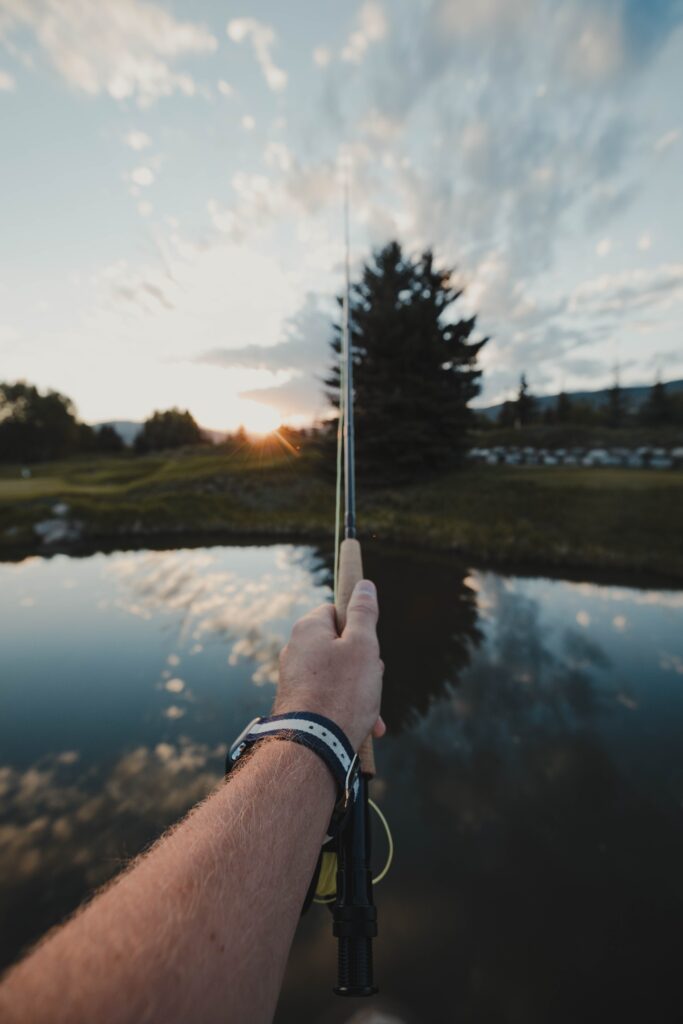
Structure and Cover
Structure and cover are vital components of fish habitat and play a significant role in their behavior and feeding patterns. Understanding the importance of structure and cover and employing the right techniques can greatly enhance your fishing experience.
Importance of Structure and Cover for Fish Habitat
Fish require structure and cover to feel secure, find food, and avoid predators. Structures can include submerged rocks, fallen trees, docks, or bridge pylons, while cover may include vegetation, weeds, or underwater grass beds. These features provide fish with shelter, ambush points, and areas with higher food availability.
When fishing around structure or cover, it’s important to approach stealthily and make accurate casts. Fish in these areas can be more cautious and easily spooked, so finesse techniques and lighter line may be necessary. By presenting your bait or lure in a way that mimics the natural movement of prey, you can entice strikes from fish hiding in these areas.
Techniques for Fishing around Structure and Cover
When targeting fish near structure or cover, there are various techniques you can employ to increase your chances of success. One effective technique is flipping or pitching, which involves casting your bait or lure into tight spaces near structure or cover. This technique allows for precise presentation and can entice fish hidden in those areas.
Another technique is using weedless rigs, which minimize the chances of your bait or lure getting snagged in vegetation or submerged obstacles. Weedless hooks or Texas rigs can be effective in fishing around cover, allowing you to present your bait in close proximity to fish-holding areas without getting tangled.
Pay attention to visible signs of fish activity, such as splashes or swirls near structure or cover, as these can indicate the presence of active fish. By focusing on these areas and using appropriate techniques, you can increase your chances of landing fish.
Food Sources
Understanding the key food sources for the fish you are targeting is essential for successful angling. Fish rely on various natural prey items for their sustenance, and matching your lures or baits to these food sources can greatly improve your chances of attracting fish.
Identifying Key Food Sources for the Target Fish
Different fish species have specific food preferences, which can vary based on their size, habitat, and feeding habits. Doing research or talking to local anglers and bait shops can provide valuable insights into the primary food sources for the fish you are targeting.
For example, bass may feed on baitfish such as shad or bluegill, while trout may target insects or crayfish. Knowing the primary food sources can help you select lures or baits that closely resemble these prey items and trigger a feeding response from the fish.
Matching Lures and Baits to Natural Prey
Matching your lures or baits to the natural prey of the fish can significantly increase your chances of success. Pay attention to the size, color, and action of the prey items and select lures or baits that closely mimic these characteristics.
For example, if the fish are feeding on small minnows, using a small crankbait or swimbait in the appropriate color pattern can be effective. If the fish are targeting insects, using dry flies or nymphs that imitate the specific insect species can yield good results.
Experiment with different lure presentations and observe how the fish respond to determine the most effective techniques. By closely mimicking the natural prey, you can entice strikes and improve your overall fishing success.
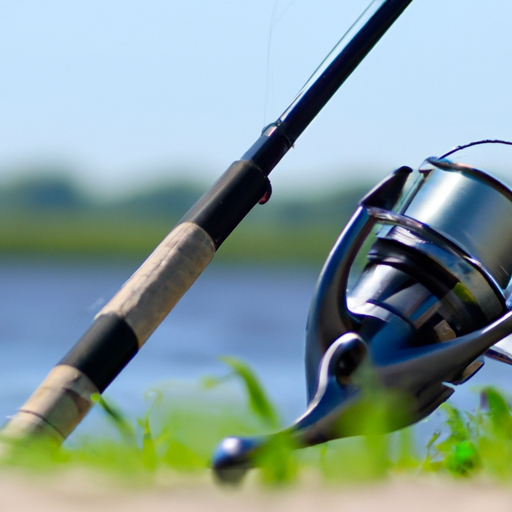
Seasonal Patterns
Fish behavior can vary significantly throughout the year, and recognizing seasonal patterns is crucial for adapting your fishing techniques. Understanding the changes in fish behavior and adjusting your approach accordingly can increase your chances of landing fish consistently.
Recognizing Seasonal Fish Behavior Patterns
Throughout the year, fish go through various phases and exhibit different behaviors based on factors such as water temperature, spawning cycles, and available food sources. Recognizing these patterns can help you understand where fish are likely to be and how they are likely to respond to different presentations.
For example, during the spring, many fish species engage in spawning activities and may be more aggressive and willing to strike. In summer, fish may seek deeper, cooler water to escape the heat, potentially requiring adjustments in your fishing locations or techniques. In fall, fish may actively feed in preparation for the upcoming winter, making it an excellent time to target them.
By staying attuned to these seasonal patterns and making the necessary adjustments to your fishing strategies, you can increase your chances of success throughout the year.
Adapting Fishing Techniques throughout the Year
Adapting your fishing techniques to match the seasonal patterns can greatly improve your chances of success. As fish behavior and feeding patterns change, consider adjusting your lure selection, presentation, and fishing locations accordingly.
During the spring, for example, using lures that resemble baitfish or imitate the aggressiveness of spawning fish can elicit strikes. In summer, when fish seek cooler water, targeting deeper areas or using techniques that present your bait at different depths can be effective. In fall, focusing on areas with increased baitfish activity and using lures that mimic their movement can generate strikes.
Be flexible and willing to experiment with different techniques as you adapt to the changing seasons. By understanding the seasonal fish behavior patterns and adjusting your approach, you can experience consistent fishing success throughout the year.
Light Conditions
Light conditions can greatly influence fish activity and feeding patterns. Understanding the impact of light on fish and selecting the right fishing time based on lighting can significantly enhance your fishing experience.
Evaluating the Impact of Light on Fish Activity
The intensity and angle of light can affect fish behavior in various ways. Bright sunlight can make fish more cautious and seek shade or cover, while low-light conditions may trigger increased feeding activity. Different fish species have varying light preferences, so understanding the behavior of your target species is crucial.
During low-light periods, such as dawn or dusk, fish may venture into shallower areas to feed. These times are commonly referred to as the “golden hours” by anglers, as the low light intensifies fish activity and increases their vulnerability. Overcast days can also provide favorable lighting conditions, as they reduce the intensity of direct sunlight and make fish more active.
Choosing the Right Fishing Time Based on Lighting
Selecting the right fishing time based on lighting conditions can significantly improve your chances of success. Consider fishing during the early morning or late evening when the light is lower, as fish may be more active during these times.
If fishing during bright sunlight, focus your efforts on shaded areas or areas with cover that can provide relief from the direct light. Structures such as docks, fallen trees, or vegetation can offer fish shade and a sense of security.
Adapting your fishing schedule to match the lighting conditions can increase your chances of encountering actively feeding fish. Experiment with different times of the day and observe how fish behavior changes in response to various lighting conditions.
In summary, reading the waters and understanding fishing conditions is crucial for angling success. By studying water clarity, temperature, currents, tides, weather patterns, wind, structure and cover, food sources, seasonal patterns, and light conditions, you can make informed decisions and adjust your fishing techniques accordingly. Remember to stay observant, flexible, and open to experimentation, as each fishing day brings unique conditions and opportunities. Enjoy the journey of discovering how to navigate the waters and unlock the secrets to successful fishing!




